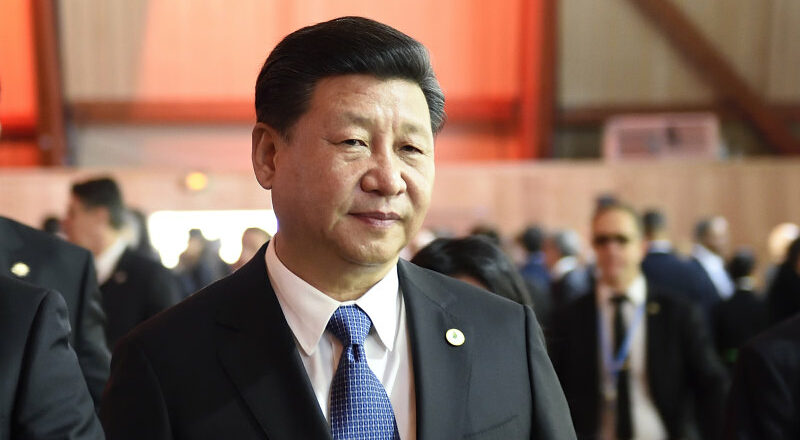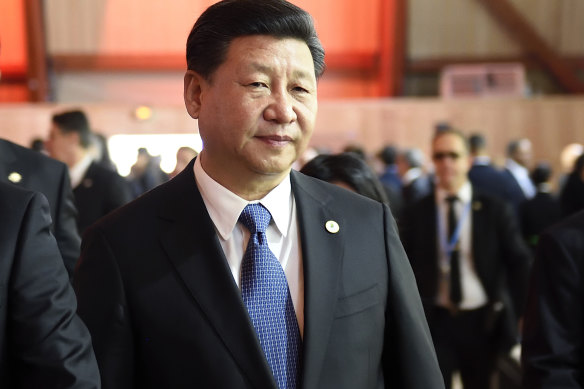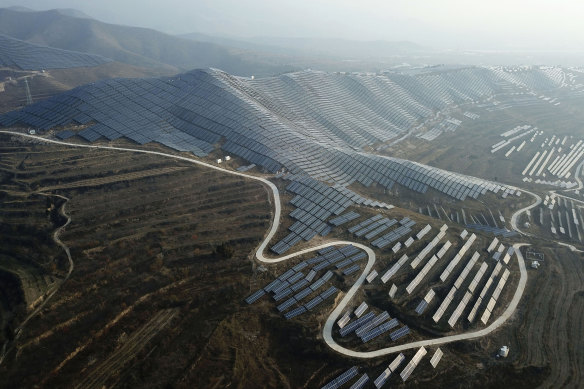China’s green surge could be a watershed moment for the world
Save articles for later
Add articles to your saved list and come back to them any time.
China’s carbon emissions have either peaked already or will do this winter, seven years ahead of schedule. They may plateau for a year or two but will then go into exponential decline for mechanical and unstoppable reasons.
The country’s target of net-zero by 2060 is likely to be achieved a decade earlier than previously assumed, and perhaps earlier than in Europe.
Xi Jinping is betting big on a green future.Credit: AP
This is a remarkable turn of events. Xi Jinping has made a giant strategic and economic bet on clean-tech dominance, aiming to corner the world’s renewable market and to break dependency on sea-borne energy supplies running through the US 7th Fleet.
The International Energy Agency says China accounts for 60 per cent of all new solar and wind power being installed across the world this year and next. This rollout has combined with a drastic slowdown in China’s rate of economic trend growth and the exhaustion of its Ponzi style property model.
Lauri Myllyvirta, co-founder of the Centre for Research on Energy and Clean Air, says China has reached a structural tipping point where the rollout of renewables is outpacing the rise in electricity demand.
“A drop in power-sector emissions in 2024 is essentially locked in. We’re likely to see a fall in total CO2 emitted in the first half of next year,” he said.
China is building a gargantuan network of “clean energy bases” in the Gobi, Ordos, and Tengger deserts, and further across the arid wastelands of the northwest. Solar and wind parks run along an arc from Inner Mongolia to Qinghai on the Tibetan plateau.
The electricity will reach the cities of industrial China through ultra-high voltage cables, which cut transition losses to 3.5 per cent per 1000 kilometres.
The scale is staggering. The Golmud Solar Park in Qinghai is already the world’s largest solar project with 2.8 gigawatts (GW) of installed capacity, drawing on seven million panels stretching across the sands. The plan is to enlarge it six-fold within five years.
The regime is approving two new coal plants a week. It does not mean what many in the West think it means. China is adding one GW of coal power on average as back-up for every six GW of new renewable power. The two go hand in hand.
“The more renewable energy used, the more the need for coal peaking capacity. A large number of coal power units will be idle,” says Chinese coal expert Li Ting.
The coal plants will be used to buttress wind and solar rather than as baseload, and to avert a repeat of blackouts that traumatised the Chinese elites in 2021-2022.
Coal companies will be paid a subsidy under a capacity price mechanism unveiled earlier this month to keep reserve power. S&P Global says the capacity usage rate will fall to 25 per cent over the next two decades.
The coal that is burned will increasingly come with carbon capture. The mining province of Shanxi has a project underway to turn CO2 into ‘gold’ by making carbon nanotubes, which boost the power of lithium-ion batteries in EVs.
Myllyvirta said the spike in Chinese emissions over the last two years is an anomaly caused by hydropower cuts following droughts. La Niña is now refilling the reservoirs of the Great Snowy Mountains and Tibet.
Putin’s war in Ukraine also led to a surge in coal use after liquefied natural gas (LNG) prices went through the roof. That episode is fading. China’s LNG imports were up 30 per cent in October from a year ago.
The International Energy Agency says China accounts for 60 per cent of all new solar and wind power being installed across the world this year and next.Credit: AP
At the risk of overtaxing the reader’s appetite for figures, it is worth spelling out the enormity of what China is doing. The China Electricity Council says the country will add 210 GW of solar this year, twice the entire solar capacity installed in the US to date.
It is not going to stop there. Carbon Brief says China’s output of solar panels was 310 GW in 2022; it will be 500 GW in 2023; and 1000 GW in 2025 – four times the total installation of new solar worldwide last year.
China is undoubtedly getting over its skis. The grid cannot yet absorb so much renewable power. Curtailment is a chronic problem. But it is equally obvious that China will not let that stand in the way. The grid will catch up.
Xi seeks global supremacy. He was never going to let climate worries alone hold back China’s rise. But today the two are in perfect alignment.
The ramp up of battery capacity is even steeper: 550 GWh in 2022; 800 GWh in 2023, and 3,000 in 2025. That will alleviate the shorter end of intermittency.
The point to remember about Xi is that he was green long before it became fashionable. He wrote a weekly column twenty years ago as Zhejiang party chief warning that China’s “energy-intensive and high-polluting” economic model was unsustainable.
He defied the orthodoxy of break-neck industrialisation and GDP worship, launching a radical ‘Green GDP’ programme in Zhejiang in 2004. It called on local governments to subtract ecological damage from the raw GDP figures.
He was defeated by vested interests, one reason why he has been careful not to force a showdown too soon with China’s powerful coal lobby. He is circumventing them instead by giving renewable companies priority access to cheap credit from the state-controlled banks.
The brains behind the Green GDP movement was Xie Zhenhua, today China’s climate negotiator and the man who paved the way for the Paris climate accord.
He helped Xi overcome entrenched opposition from China’s old guard by using a Kuznets Curve to show that a country’s CO2 emissions peak and decline naturally as it develops, and therefore that climate ‘concessions’ would not restrain China’s development.
This led to Xi’s Yingtai evening chat with Barack Obama, and the deal that made Paris possible.
Xie Zhenhua and US negotiator John Kerry have replicated the formula this month in advance of COP28 in Dubai, calling for a tripling of renewable energy by 2030, as well as carbon capture. It will not be easy for the carbon cartel to sabotage COP28 by turning it into a fight between the West and the rest.
China’s electric car market has grown at a staggering pace.Credit: Bloomberg
The concept of ‘concessions’ is in any case jejune. China itself is at the sharp end of a ‘two degree’ world. The water towers of Tibet are heating twice as fast as global mean temperatures. Melting glaciers are causing spring floods followed by droughts. The aquifers of the North China plain are drying up.
Xi seeks global supremacy. He was never going to let climate worries alone hold back China’s rise. But today the two are in perfect alignment. Clean-tech has become the spearhead of China’s global economic conquest, and this changes the thrust of Beijing’s climate diplomacy.
It is no longer possible for footdraggers to hide behind China. As Chinese emissions roll over and go into freefall, Xi will become an even bigger problem for them than Western preachers.
As for those in Europe who think that a carbon border tax can protect the car industry against imports of cheap Chinese EVs, they delude themselves.
China’s battery king CATL will be making lithium-ion batteries at a zero-carbon gigafactory in Sichuan before Germany is anywhere close. The shoe could be on the other foot.
Whatever way you look at it, peak CO2 emissions in China is a watershed moment for global geopolitics, and for humanity.
Telegraph, London
The Business Briefing newsletter delivers major stories, exclusive coverage and expert opinion. Sign up to get it every weekday morning.
Most Viewed in Business
From our partners
Source: Read Full Article




